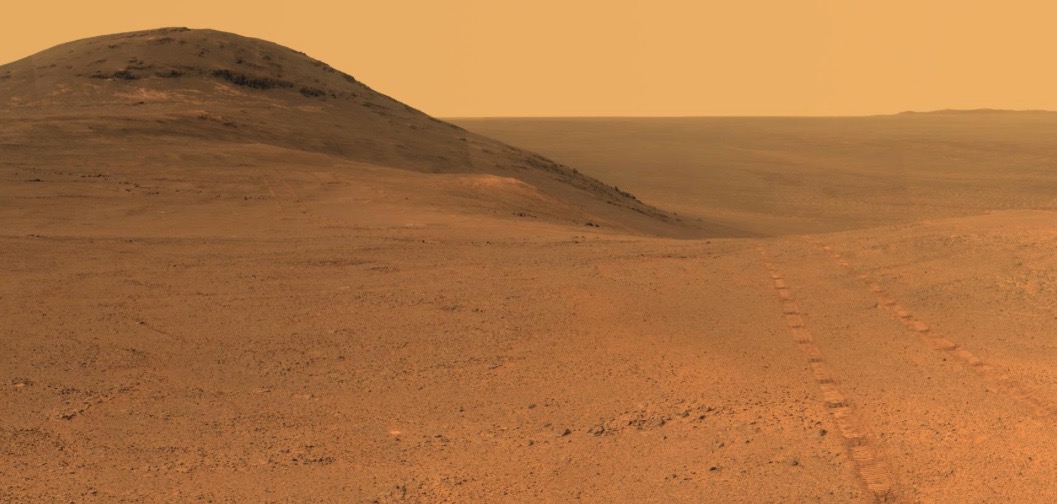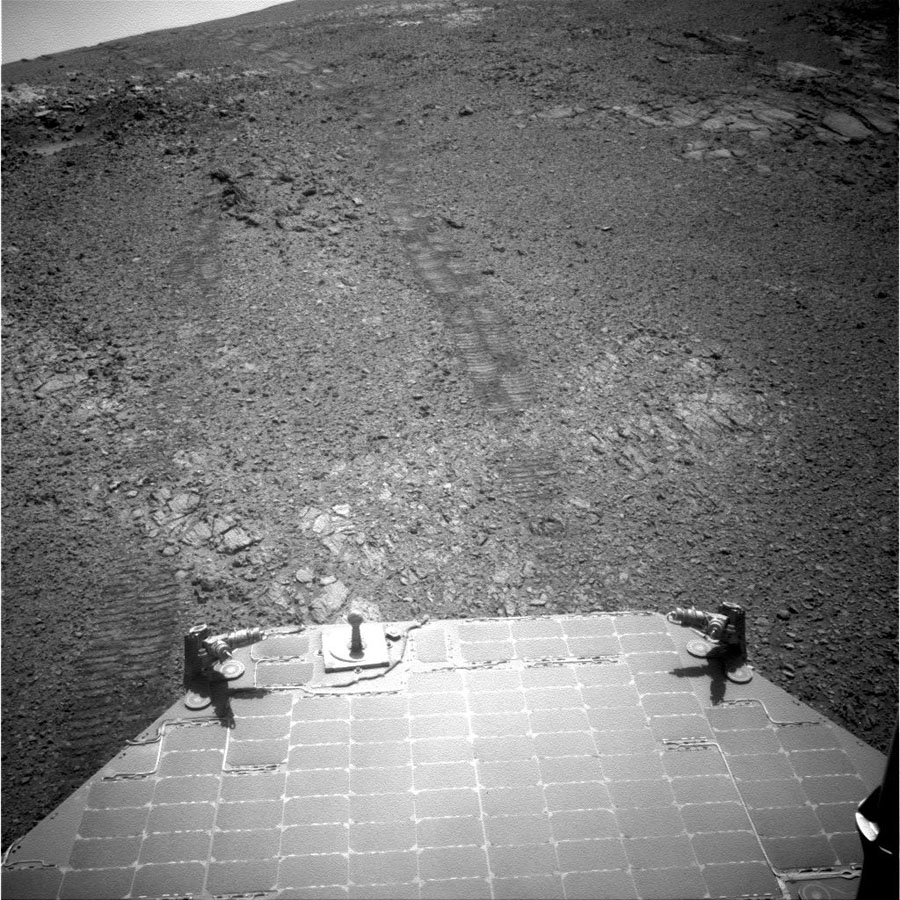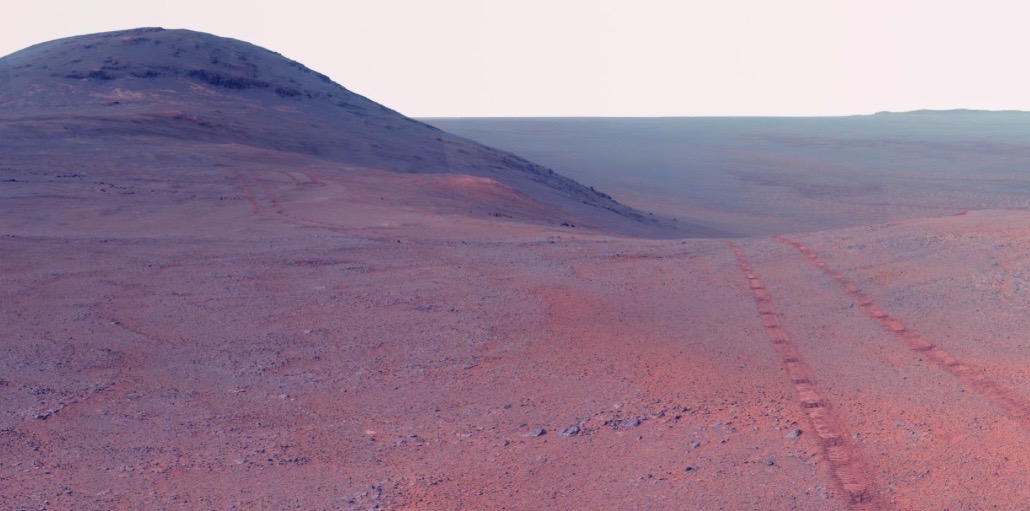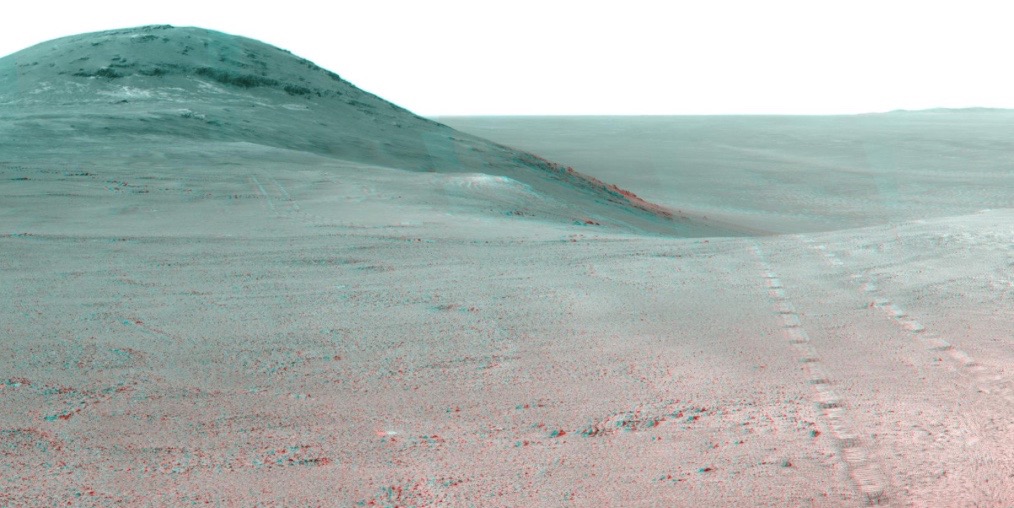Aging Mars Rover Captures Gorgeous 'Sprained Ankle' Panorama (Photos)

A striking panorama by NASA's Mars rover Opportunity shows a crater-rim notch that may have been carved by liquid water long ago.
The photo is a mosaic of multiple images taken from June 7 through June 19 — a time during which the 13-year-old rover was stationary as engineers tried to fix its balky left-front wheel, which was stuck pointing outward more than 30 degrees. As a result, Opportunity team members dubbed the image the "Sprained Ankle" panorama," NASA officials said.
The mosaic depicts a portion of the rim of 14-mile-wide (22 kilometers) Endeavour Crater, which Opportunity has been exploring since August 2011. The notch may be an ancient spillway for water headed down into the aptly named Perseverance Valley below, NASA officials said. But ice or wind may also have created the feature, they added. [13 Years on Mars! NASA Opportunity Rover Still Rolling (Video)]
"It is a tantalizing scene," Opportunity deputy principal investigator Ray Arvidson, of Washington University in St. Louis, said in a statement. "You can see what appear to be channels lined by boulders, and the putative spillway at the top of Perseverance Valley. We have not ruled out any of the possibilities of water, ice or wind being responsible."

Mission team members diagnosed the wheel issue as a stall in the left-front actuator. They managed to straighten out the wheel and get Opportunity driving again, though they're currently steering the six-wheeled rover using only the rear-wheel actuators, NASA officials said. (The right-front actuator hasn't worked since 2006.)

Opportunity has since descended into Perseverance Valley, where it's waiting out a command moratorium imposed by celestial geometry: The sun is currently between Mars and Earth, disrupting communications between mission control and the rover. NASA stopped sending commands to its three active Red Planet orbiters and two rovers on Saturday (July 22) and won't resume commanding until Aug. 1, agency officials said.
The golf-cart-size Opportunity touched down in January 2004, a few weeks after its twin, Spirit. Both rovers embarked on three-month missions to hunt for signs of long-ago liquid water. Both found plenty of such evidence, then kept on rolling; Spirit wasn't declared dead until 2011, and Opportunity is still going strong (though it is showing signs of age, as the actuator issues and an arthritic robotic arm attest).
Get the Space.com Newsletter
Breaking space news, the latest updates on rocket launches, skywatching events and more!
In case you can't get enough of the Sprained Ankle panorama, here it is in enhanced color:

And here it is in 3D:

Follow Mike Wall on Twitter @michaeldwall and Google+. Follow us @Spacedotcom, Facebook or Google+. Originally published on Space.com.
Join our Space Forums to keep talking space on the latest missions, night sky and more! And if you have a news tip, correction or comment, let us know at: community@space.com.

Michael Wall is a Senior Space Writer with Space.com and joined the team in 2010. He primarily covers exoplanets, spaceflight and military space, but has been known to dabble in the space art beat. His book about the search for alien life, "Out There," was published on Nov. 13, 2018. Before becoming a science writer, Michael worked as a herpetologist and wildlife biologist. He has a Ph.D. in evolutionary biology from the University of Sydney, Australia, a bachelor's degree from the University of Arizona, and a graduate certificate in science writing from the University of California, Santa Cruz. To find out what his latest project is, you can follow Michael on Twitter.









